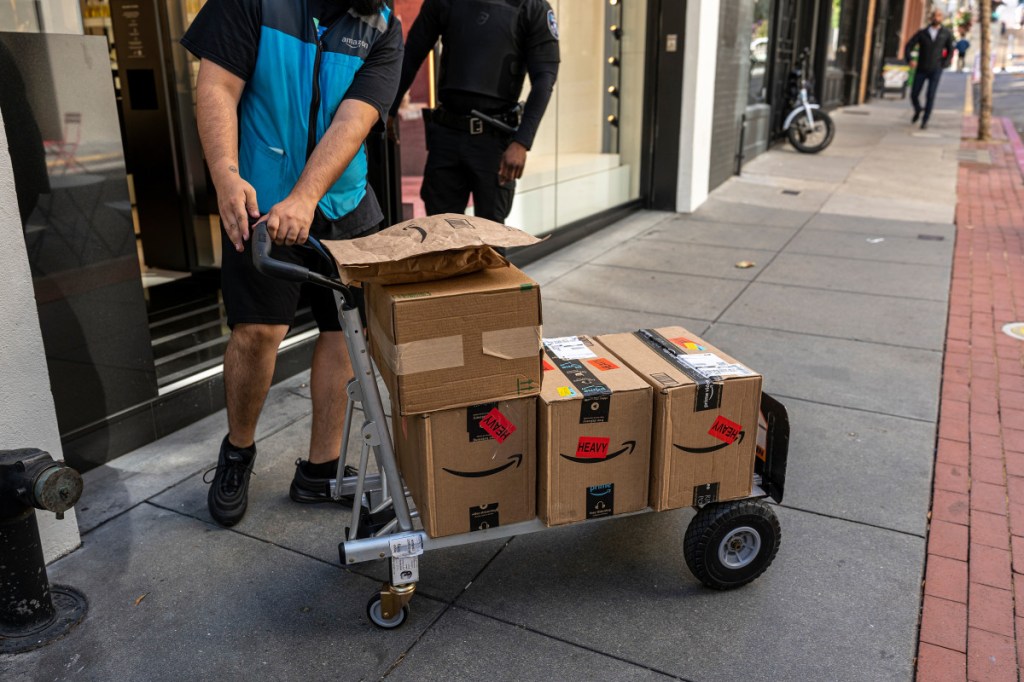Amazon gets a popular brand Walmart doesn’t have
Published 2:00 pm Tuesday, January 16, 2024

- amazon-plans-second-prime-day-in-appeal-to-deal-hungry-shoppers
As competition between the largest online retailers continues to heighten, pursuing even the slightest advantage over a peer can make day-to-day operations seem like high stakes.
Trending
Two of the biggest players in the space are Amazon (AMZN) – Get Free Report, the largest online retailer and Walmart (WMT) – Get Free Report, the largest retailer.
Related: Uber shutting down popular billion-dollar service
The two are in constant, relentless pursuit of each other. Amazon continues to make strides in quicker shipments via conventional roadways, and Walmart is rapidly expanding its drone delivery.
Trending
Both retailers want a bigger slice of the market share, and are willing to go to great lengths to get it. As of November 2023, Amazon had over 37% of online U.S. retail market share, while Walmart had over 6%. On the brick and mortar side, Walmart easily takes the cake, dwarfing Amazon’s minimal in-person presence, comparatively.
In terms of total sales, Walmart still edges Amazon out, with over $600 billion in global sales in 2022, while Amazon claimed $343 billion over the same period.
So while Amazon may be synonymous with online shopping convenience, it’s still Walmart that reigns supreme in terms of overall service.
Amazon inks major new storefront deal
This is partly why Amazon’s recent direct-to-consumer (DTC) efforts have been watched with such curiosity by retail analysts and reporters. We want to know if it will work in the long term. Does carrying more sought-after brands make for a stickier revenue model, or do customers simply go where they can find the best deals?
In its most recent deal, the answer may be yes to both. Amazon recently announced it will open a Curology storefront in January. Curology is a personalized, online skincare brand for which customers pay monthly for their own curated regimen based on their individual needs and goals. It typically runs an average of about $30 per month, give or take.
Except on Amazon, customers don’t need to go through the personalized experience to get a product. They may simply navigate to the storefront and get what they need — or what they anticipate they need, at a faster pace than Curology might ordinarily be able to dispatch via its own fulfillment processes.
All non-prescription items will be sold via Amazon, including several new products, like a dark spot serum, a liquid pore exfoliant, and spot patch acne treatments.
Curology made a recent agreement with Target in 2022 — its first in-person retail deal.
“Shifting to an omni-channel model enables Curology to reach incremental consumers who prefer to shop skincare at Target or Amazon. This growth in physical availability is a critical step in growing Curology’s household penetration,” CEO Heather Wallace said.
Wallace added that she hopes the Amazon expansion will help the company expand beyond its prescription clients and grow its core clientele of women aged 18-34.
Wallace previously hailed its prescription products as Curology’s “hero,” though it expects to grow rapidly in the coming years.
Amazon, for its part, is no stranger to an expanding array of storefronts. It began selling Peloton bikes and accessories in 2022 and personalized vitamin protocol Care/of in 2023. The company has been betting big on health and personal care; in late 2023 it announced Prime members can receive access to virtual healthcare via its site for just $9 monthly or $99 per year. This comes on the heels of its $3.9 billion acquisition of OneMedical.









